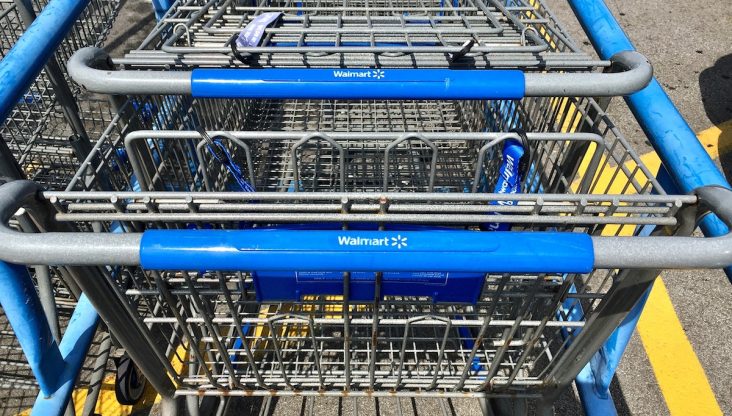Walmart expected to report leaner profits, despite modest revenue growth
by May 13, 2019 4:59 pm 1,094 views

Retail behemoth Walmart Inc. will report first-quarter earnings Thursday (May 16) before the opening bell. Wall Street anticipates net income of $2.925 billion for the quarter ending April 30, or $1.02 per share, down 10.5% from the $1.14 per share earned a year ago.
While profits are expected to be leaner amid margin compression and continued investments in technology and people, analysts are projecting slightly higher revenues of $124.99 billion, up 1.9% from a year ago. Walmart has bucked the trend with higher same-store sales and steady traffic for 17 consecutive quarters. Wall Street expects comp sales of 3.1% overall with Walmart U.S. producing comp sales growth of 3.4%.
Despite a competitive landscape, Walmart is picking up market share, which CEO Doug McMillon attributes to higher quality products and a broad assortment of merchandise. Walmart forecast same-store sales growth between 2.5% and 3% for the U.S. business for this year. That compares to 3.6% achieved last year and 2.1% in the year prior.
Stephens Inc. analyst Ben Bienvenue is bullish on Walmart with an overweight rating and a one-year target price of $117. He said the secret to Walmart’s success is linked to the company’s ability to leverage expenses at scale, which support comp-sales growth. He said this strategy has worked well for the past two years.
“We think that following several years of an accelerated pace of investment into the business, the company has the opportunity to marry sustained/strategic investments with targeted cost savings practices, like the recently announced reorganization of store manager ranks,” he noted.
Bienvenue expects Walmart to deliver solid results on comp sales for the quarter in its U.S. business and Sam’s Club. He said Walmart will likely continue to leverage expenses throughout the fiscal year, accelerating each quarter.
“While prices on the items we track drifted higher during the quarter, Walmart’s price differential to Kroger during the quarter suggests Walmart’s basket was 10.9% less expensive during the first quarter,” he noted.
Stephens found Walmart had a 9.5% price gap against Kroger in the fourth quarter and a 7.2% price gap in the third quarter of last year. Bienvenue said lack of inflation likely contributed less pressure to Walmart’s gross margin in the quarter. He said the pharmacy industry is struggling with lower margins according to commentary from Walmart’s competitors. He said it’s tough to discern whether this will have any material impact on Walmart given its scale in the pharmacy industry. This is a wildcard and could place pressure on gross margins for the U.S. segment of Walmart.
Michael Lassiter, a retail analyst with UBS, is neutral on Walmart shares. UBS said for Walmart to match Amazon’s one-day shipping promise it would require an additional $215 million of investments. That is based on Walmart’s online sales which are about 7% of Amazon’s gross merchandise volume.
UBS estimates between 40% and 60% of Walmart’s e-commerce sales are online grocery pickup. The investment firm noted Walmart’s large brick-and-mortar scale is a source of strength and if leveraged to the fullest could keep the impact manageable if trying to match one-day shipping. UBS forecasts e-commerce sales growth of 35% this year, primarily because of the company’s strategy to add 1,000 grocery pickup locations before the end of the year.
UBS has a price target of $105, which is near the middle of the pack. Stephens and UBS each credit Walmart with a strong cash flow that gives the retail giant some advantage over many of its competitors.
Walmart shares (NYSE: WMT) were trading lower on Monday, amid trade tensions with China which sent the Dow Jones Industrial Average down more than 2%. Walmart shares were trading at $99.93 in the afternoon session, down $1.98 on normal trading volume. For the past 52-weeks, Walmart shares have traded between a low $81.78 and a high of $106.21. Year-to-date shares are up 7.5%, despite the volatility in recent days from trade concerns.
